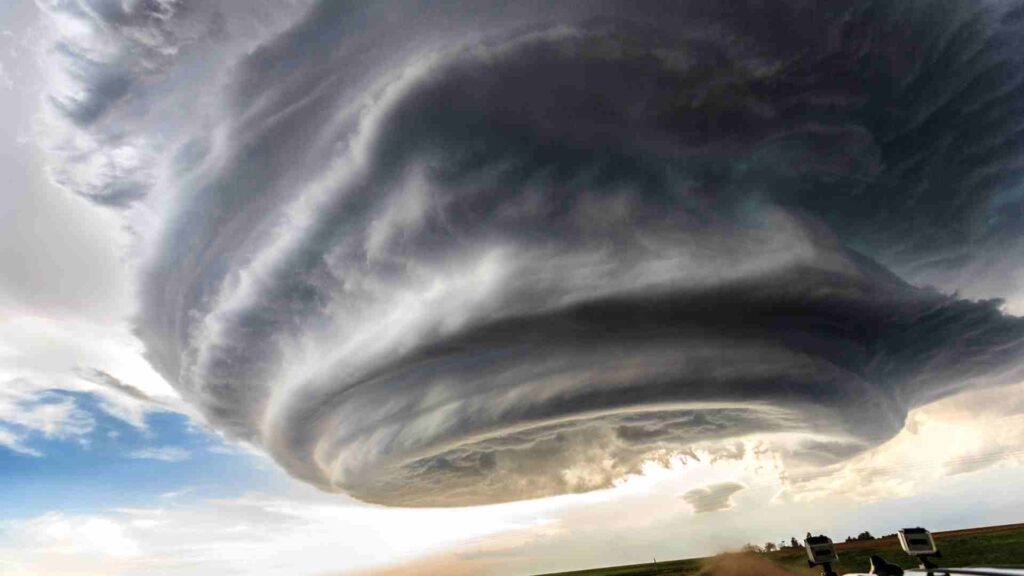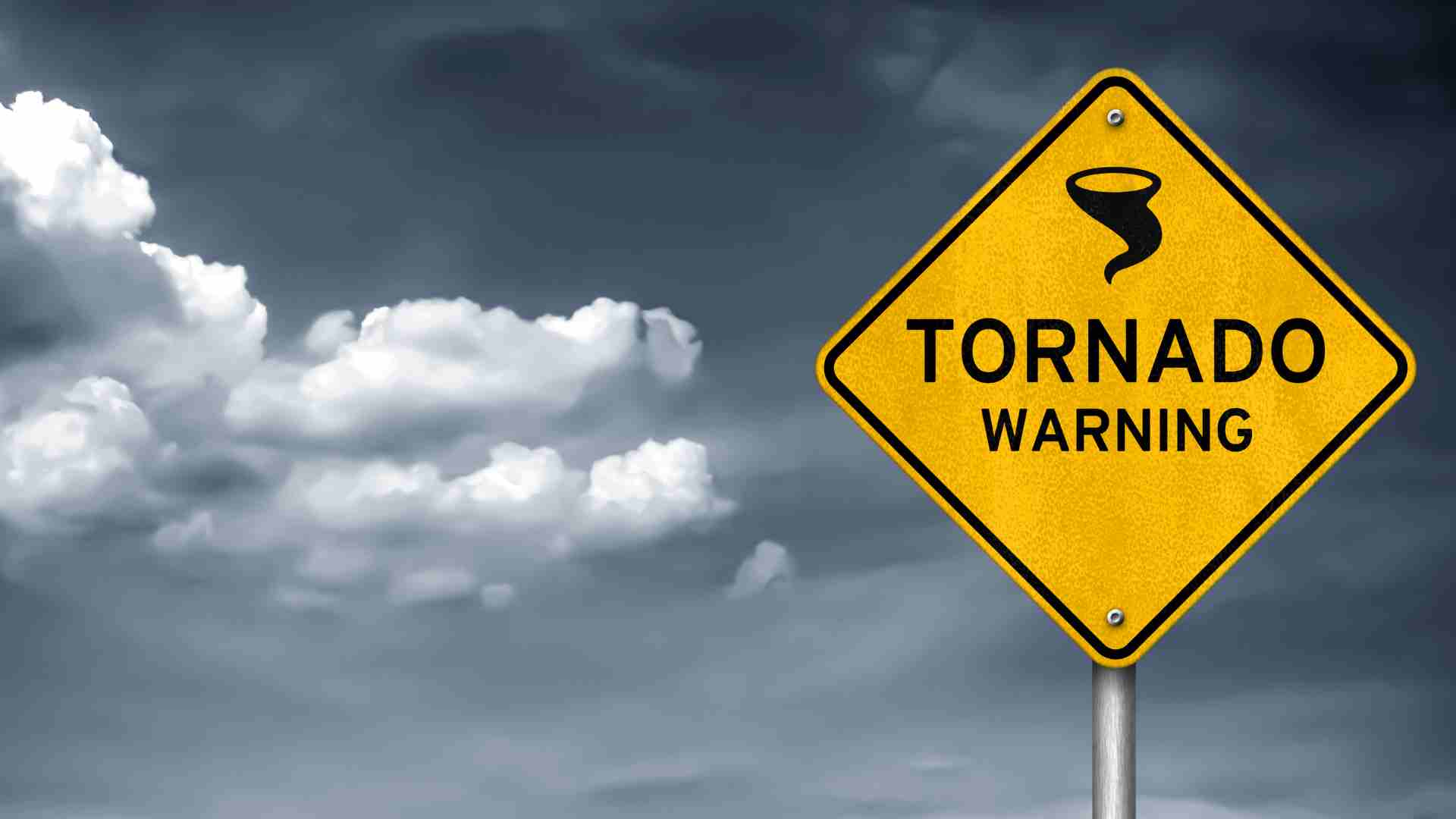We use affiliate links to run our site. When you buy through links on our site, we may earn an affiliate commission, without any added cost to you. Learn more
Just hearing the word “tornado” can be enough to send chills down our spine. With their destructive power and unpredictable nature, tornadoes are one of the most fascinating and terrifying natural phenomena on the planet. But how much do you really know about them?
In this article, we’ll explore the science behind tornadoes, what causes them, and how to stay safe in the event of a tornado.
What is a Tornado?
A tornado is a violent, rotating column of air that extends from a thunderstorm to the ground. Tornadoes can appear as funnel-shaped clouds or wide, circular masses.
They are typically accompanied by high winds, lightning, and heavy rain, and can cause significant damage to buildings, vehicles, and other structures.
How are Tornadoes Formed?

Tornadoes are formed when changes in wind speed and direction create a horizontal rotation within a thunderstorm. This rotation can be intensified by updrafts and downdrafts within the storm, causing the rotating air to become tilted and form a funnel cloud. When this funnel cloud makes contact with the ground, it becomes a tornado.
Types of Tornadoes
There are several different types of tornadoes, each with its own characteristics and formation mechanisms. Some of the most common types of tornadoes include:
Supercell Tornadoes
Supercell tornadoes are the most common type of tornado and are typically associated with severe thunderstorms. They are characterized by a rotating updraft called a mesocyclone and can be extremely large and long-lived.
Multi-Vortex Tornadoes
Multi-vortex tornadoes are characterized by multiple smaller vortices rotating around a larger central vortex. These tornadoes can be extremely destructive and are often associated with severe thunderstorms.
Landspout Tornadoes
Landspout tornadoes are formed by non-supercell thunderstorms and are typically weaker than other types of tornadoes. They are usually smaller in size and have a rope-like appearance.
Where Do Tornadoes Occur?
Tornadoes can occur anywhere in the world but are most common in the United States. This is due to the unique geography and weather patterns in the country, which create the ideal conditions for tornado formation. Some of the states with the highest incidence of tornadoes include Texas, Kansas, Oklahoma, and Florida.
10 Lesser Known Facts About Tornadoes:
- Tornadoes can occur anywhere in the world, but they are most common in the United States. The central part of the country is known as Tornado Alley due to the high frequency of tornadoes that occur there.
- Tornadoes are classified by the Enhanced Fujita Scale (EF Scale), which rates their intensity based on wind speed and damage caused.
- The strongest tornadoes on record are rated EF5, with wind speeds over 200 miles per hour.
- Tornadoes can form from thunderstorms, hurricanes, and other types of weather systems.
- Tornadoes are often accompanied by hail and lightning, and they can cause flash floods due to heavy rainfall.
- Tornadoes can travel at speeds of up to 70 miles per hour, but their average speed is around 30 miles per hour.
- Tornadoes can range in size from a few yards to over a mile wide.
- Tornadoes can last for just a few seconds or for over an hour, but the average duration is around 10 minutes.
- Tornadoes can cause damage to buildings, vehicles, and infrastructure, and they can uproot trees and destroy crops.
- Tornadoes are often preceded by a wall cloud, a large, rotating cloud that forms at the base of a thunderstorm. This is a warning sign that a tornado may be forming.
Tornado Safety Tips:
If you live in an area prone to tornadoes, it’s important to know how to stay safe in the event of a storm. Here are some tornado safety tips to keep in mind:
- Have a plan in place: Make sure you have a designated safe spot in your home, such as a basement or interior room on the lowest level.
- Stay informed: Keep a close eye on weather forecasts and alerts, and be prepared to take action if necessary.
- Seek shelter immediately: If a tornado warning is issued, seek shelter immediately. If you’re outside, try to find a sturdy building or lie flat in a low-lying area.
- Stay away from windows: In the event of a tornado, stay away from windows and seek shelter in an interior room or hallway.
- Be prepared for power outages: Tornadoes can cause widespread power outages, so it’s important to have a supply of non-perishable food, water, and other essentials on hand.
Conclusion:
Tornadoes are a powerful and dangerous natural phenomenon that can have devastating effects on communities. While scientists have made significant progress in predicting tornadoes and improving warning systems, it is still crucial for individuals and communities to be prepared for these events.
By staying informed, having an emergency plan, and taking steps to protect themselves and their property, people can reduce the risk of injury and damage from tornadoes.
It is also essential for ongoing research and development to continue to improve our understanding and prediction of tornadoes, so that we can be better prepared for these powerful storms in the future.
I hope you found this post informational. Feel free to share this with others and explore more interesting posts on this site.
Amazon and the Amazon logo are trademarks of Amazon.com, Inc, or its affiliates.
